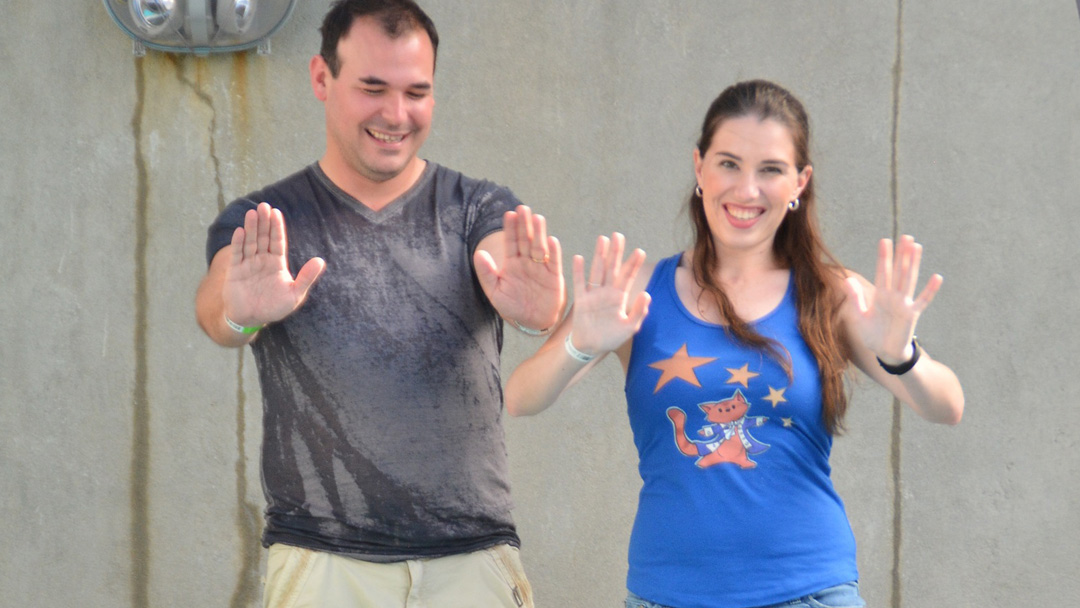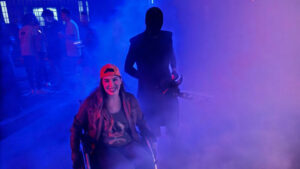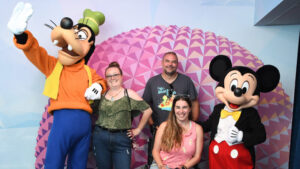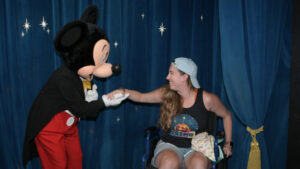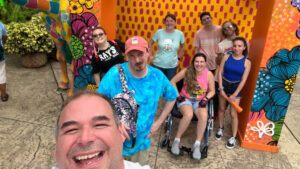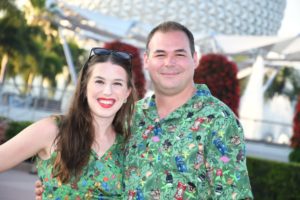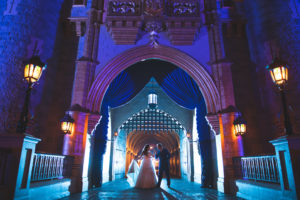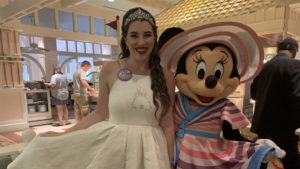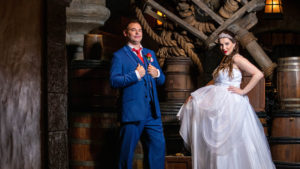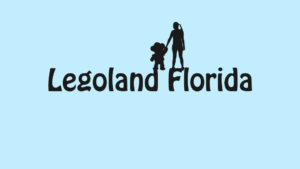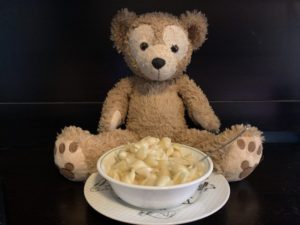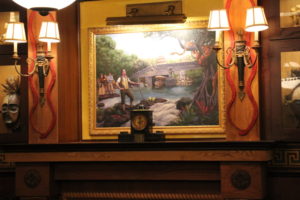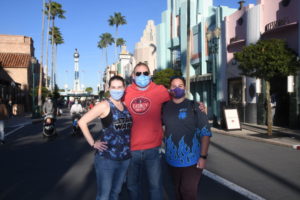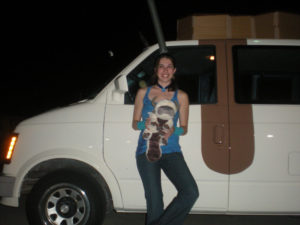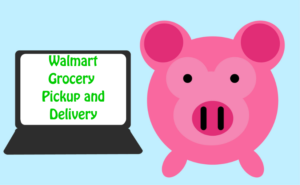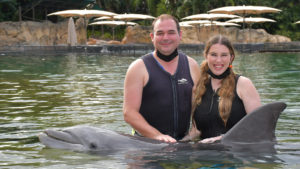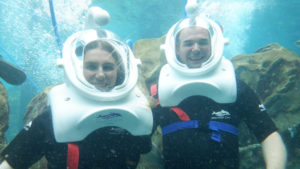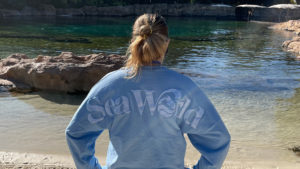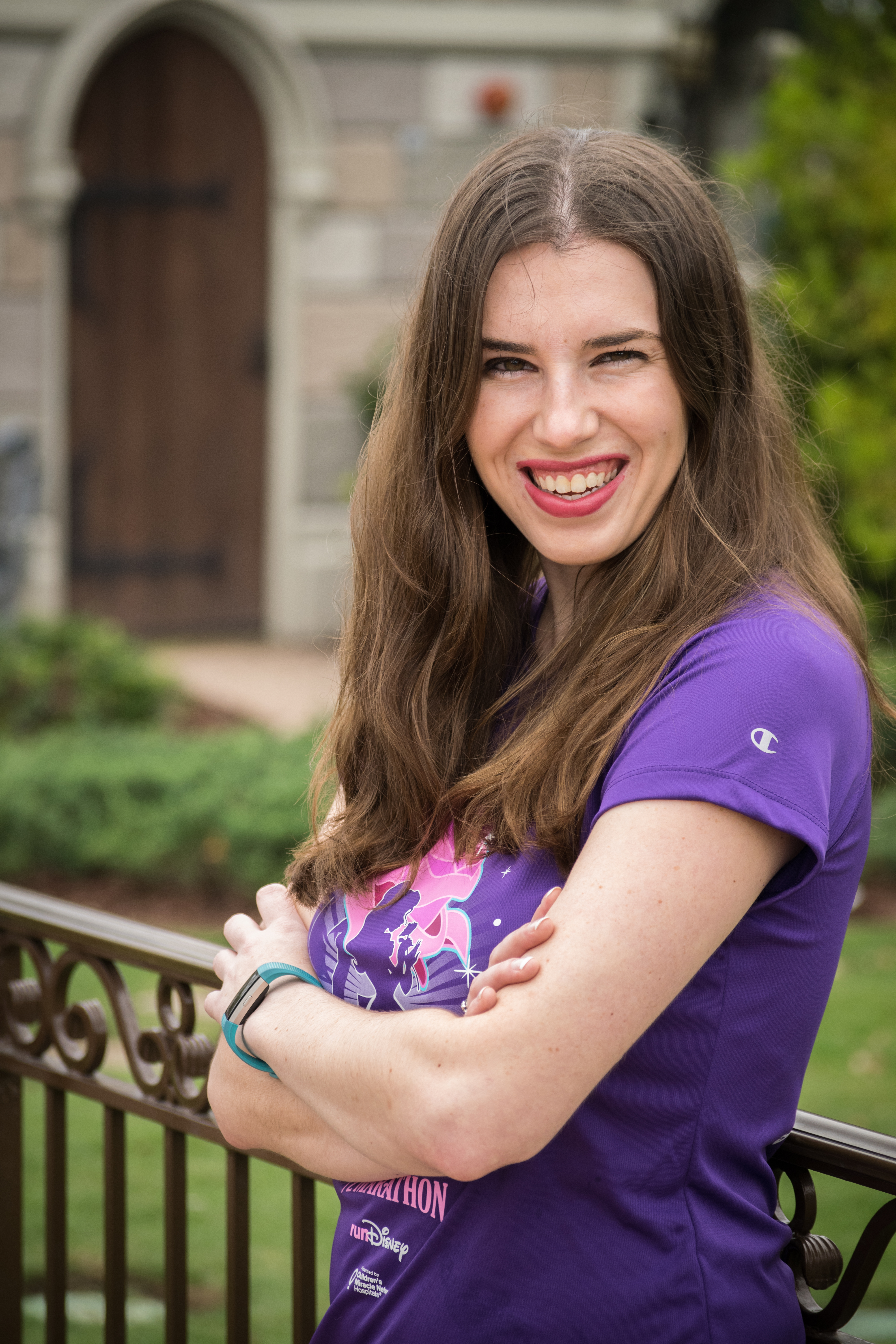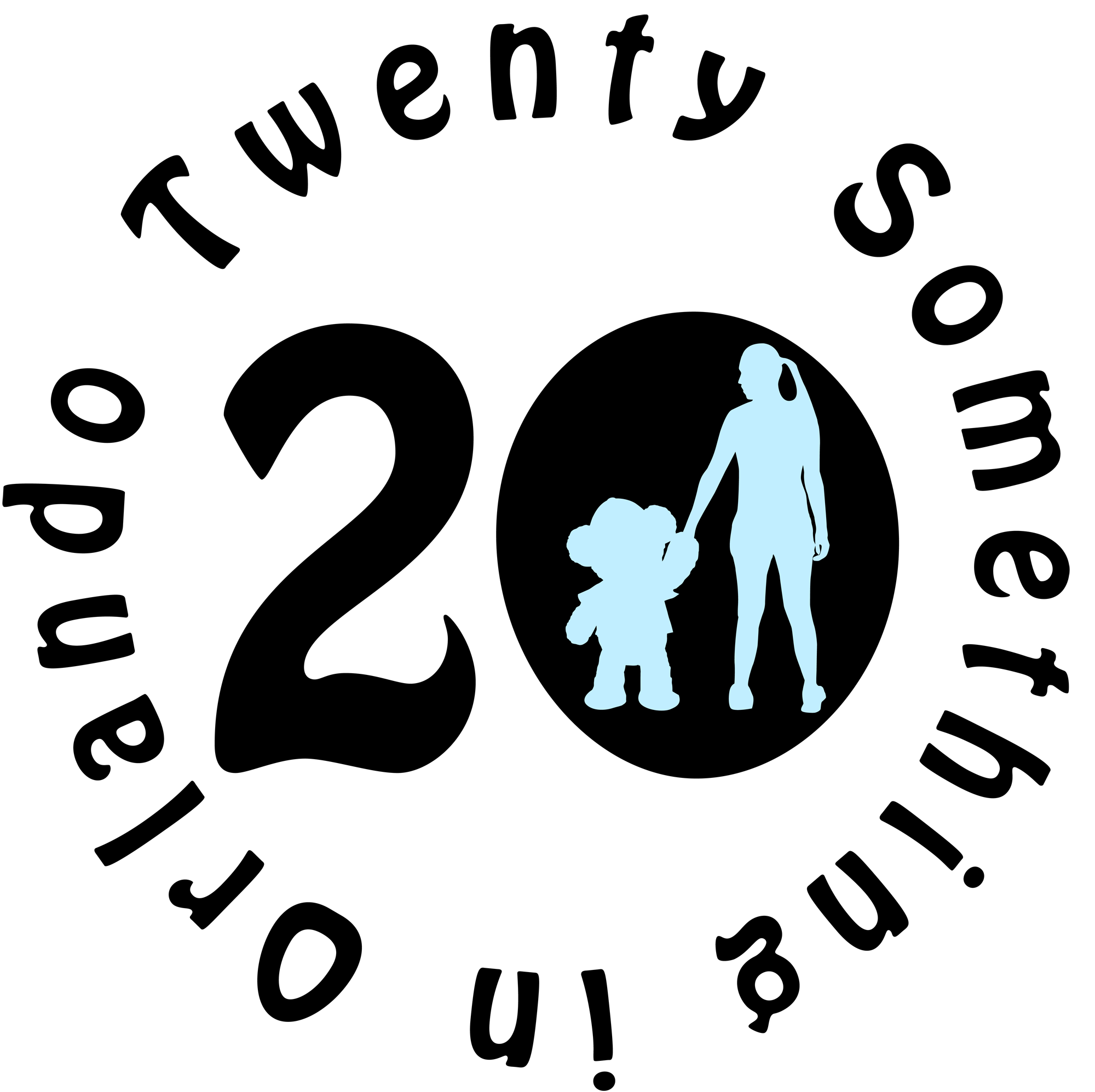SeaWorld offers a number of backstage tours and animal encounters, yes despite being an annual passholder for the better part of five years, I had never done any of them until recently. When Blue Friday rolled around, my mom heard me talking about how much I wanted to see the baby walruses at SeaWorld, so for Christmas she bought us the Beluga and Walrus Up-Close Tour so I could realize my dream of meeting a walrus!
Our tour was originally scheduled for a different date and time, so I stopped by the Guest Services Desk at the front of the park. I punched the confirmation number in and the kiosk spit out two tickets with the new date and time. It probably wasn’t necessary but I wanted to be sure we wouldn’t have any issues.
We were supposed to meet outside of the Wild Arctic Gift Shop approximately five minutes before the start of the tour, but we were there about fifteen minutes early and hung out inside the gift shop because yay air conditioning. We wandered outside and were actually the last to arrive. We met our awesome tour guide, Ronnie, and showed him the tickets, which he gave back to me for souvenirs. There were two other groups: another couple, and a family of five. The youngest was probably eight or nine, there were two teenagers and the rest were all adults, thank goodness. I still cringe thinking about the annoying kid from the Disneyland tour we did in August.
Ronnie spent about five minutes going over what we were going to be doing and explained repeatedly that nothing was guaranteed because we were on the animal’s schedule, not ours. I like that because it means none of the animals were being forced to do anything they didn’t want to do.
We walked through the gift shop into a staff only cut through that takes you directly past the ride and into the Wild Arctic exhibit area. We went through another door into a backstage area where there were lockers. All loose articles had to be put up. I already knew cameras were not allowed on the tour and I’d left the Canon at home so we didn’t have much. Ronnie assured us we would have plenty of pictures courtesy of the SeaWorld photographers.
Our tour started in the kitchen where they prepare all the food in the morning. SeaWorld goes through about 35,000 pounds of fresh fish a week! People come in around four or five a.m. every morning to prep the meals for the day. The kitchen itself wasn’t overly exciting, just long metal counter tops and four giant sinks. There was a white board on the wall with the animals’ names and their diet for the day. Wild Arctic is home to two beluga whales, four walruses, a bunch of harbor seals, and one harp seal. The names are all a little random, but that’s what makes it fun. I really wish we’d gotten to see the seal named Atari.
We headed into a room with a bunch of enrichment items, or toys. They have all sorts of stuff for the animals to play with, everything from flotation devices to the plastic roof of a kid’s outdoor play set. Everything is checked and approved by the veterinary team and rechecked on a regular basis for the animals’ safety. There was even a large plastic duck that belongs to Naluark, the male Beluga whale. It is his favorite toy and has been transferred with him every time he has been moved throughout his life. SeaWorld, like all AZA accredited facilities, occasionally moves their animals around and trades them with other AZA facilities for genetic diversity. There was also a big plastic sled that they use to take the seals out into the park for educational interactions.
Our next stop was to meet up with the photographers so they could take photos of each group in order to create photo packages and give us each a photo key card. Essentially by doing this at the start, they could upload the interaction photos and match them to the right people later because they’d have photos to compare them to. It’s pretty smart actually.
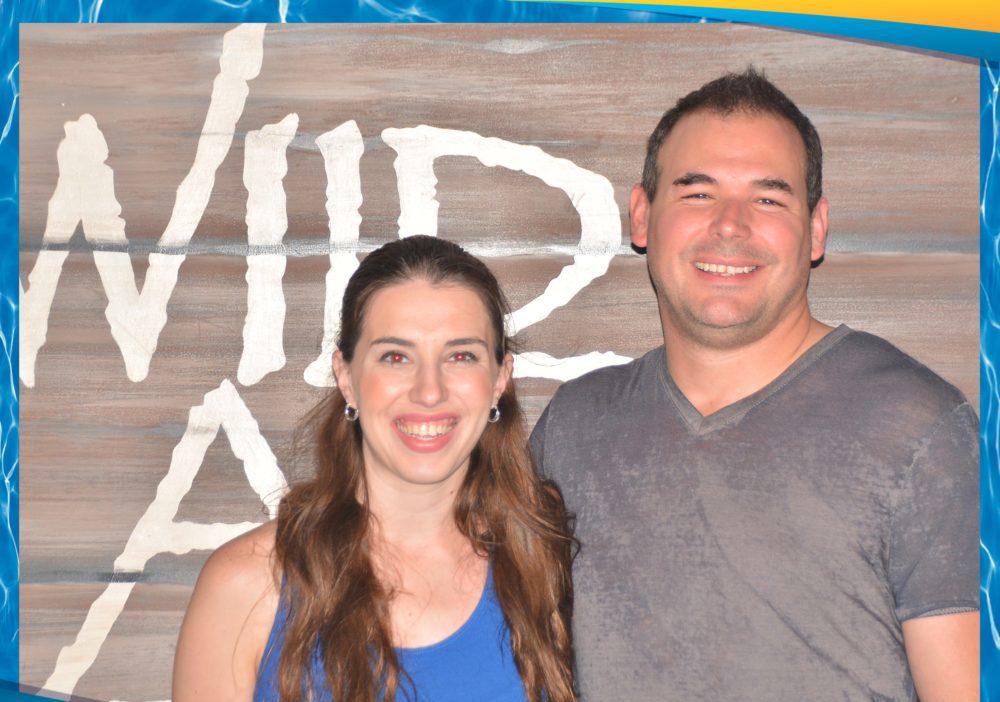
We then met the animal trainers who would be leading the interactions: Ashley, Nick, and Diana. There was a fourth trainer and for the life of me, I cannot remember her name so I’m going to call her Antiope. Two of the trainers were wearing wetsuits, and Ashley explained that we would get to see them doing “waterwork” with two of the seals. As the trainers moved outside and we began to follow them, Ronnie added that this was actually rather rare and even he seemed excited to get to see it.
There are three pools for the beluga whales within Wild Arctic: the indoor pool where they are on exhibit, an outdoor pool, and a medical pool. The medical pool has a ventilated floor that they can raise to bring the animals out of the water. Both the beluga whales, the walruses and most of SeaWorld’s animals are all trained to do voluntary physicals so they can receive veterinary care on a regular basis without needing to anesthetize them.
They had us sit on benches, and I jumped on the closest seat to the water. There were the two beluga whales in the water with two seals. Diana and Antiope went to the far wall where they called the seals over to them. One of the seals hauled himself (or herself, I’m not really sure) out of the water and put its head right in Diana’s lap the way a dog would. Ashley and Nick both grabbed the buckets of fish for the whales and headed over to the water’s edge. After a brief safety spiel, Nick called over the group of five and Ashley said she’d take the first couple. Jay and I looked at the other couple to see if they wanted to go first, but they motioned for us to go ahead.
We got to interact with Whisper, who is SeaWorld’s eighteen-year-old female Beluga whale. She’s sort of gray in color rather than white, which they believe is just a genetic trait she has, and she is super judgey. Whisper spent a bit of the time swimming around and judging everyone instead of doing as she was asked, which worked out great for us because we got longer with the whales than anyone!
Ashley had us do a variety of hand signals for Whisper, and Whisper in turn did a bunch of tricks for us, in between swimming off to inspect what the other group was doing anyway. She made a bunch of different vocalizations, nodded up and down, came out of the water, and waved good-bye with her tail. We each got to feed her a fish, except I missed, which Whisper did not like when she had to fish it out from where in sank into the water.
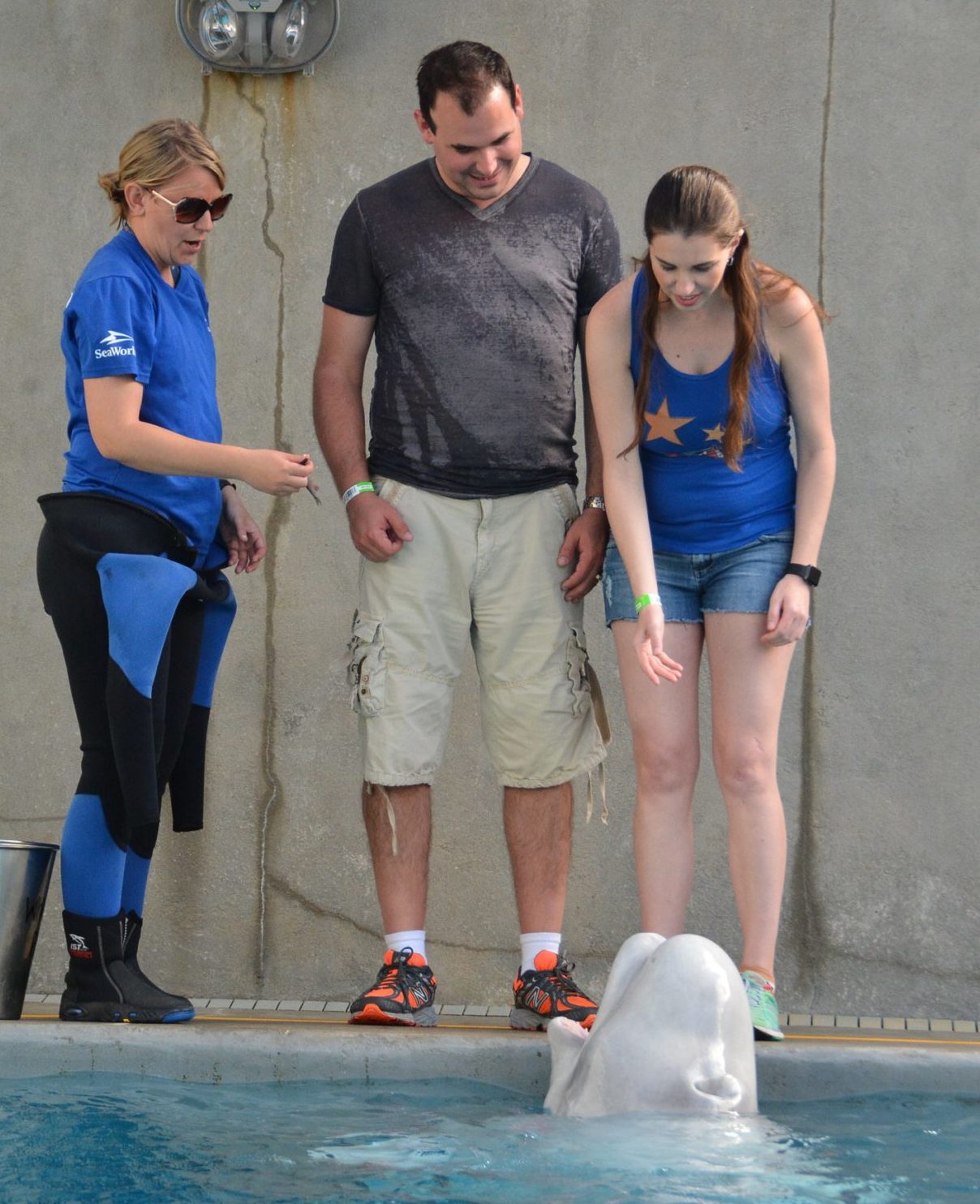
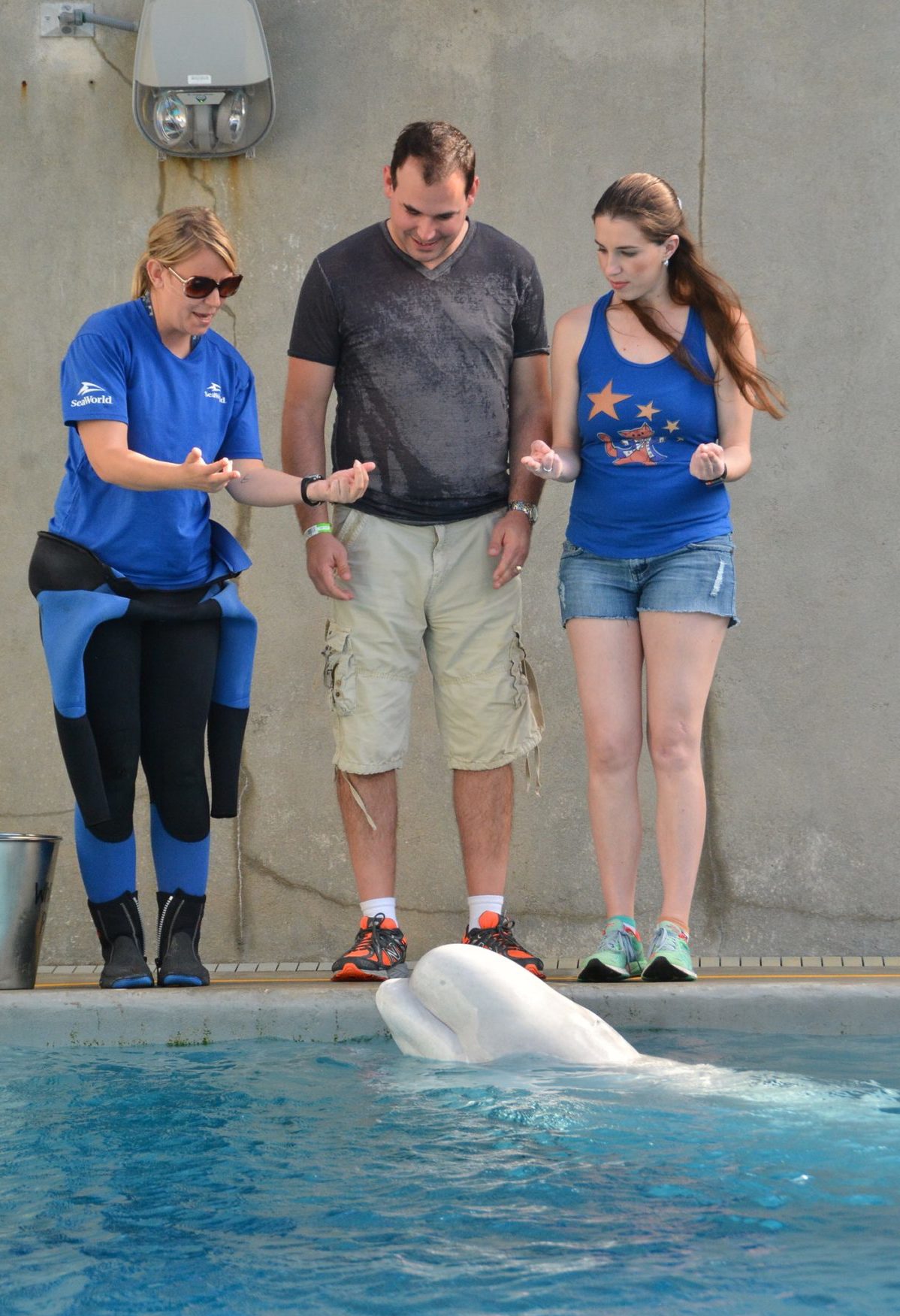
We headed back to our bench, and Diana and Antiope headed to the water. The two harbor seals were named Sturvy and Bumstead. Bumstead kept giving Antiope kisses, and I was extremely jealous. I want kisses from a seal!
Both trainers got to lie on their stomachs and have both seals push them through the water by pushing their nose against their feet, like the dolphin trainers do in the Dolphin Days show. We got to watch them work for about ten minutes and then the trainers got back out of the water. Ashley stood talking to us and answering any questions the group had, and we got to learn a lot about how SeaWorld cares for their animals. One of the seals, I honestly couldn’t tell which one, hauled itself out of the water to sneak up behind Ashley and looked rather sheepish when she turned around. He just wanted to play! I was sad he got caught, even though I’m sure he wouldn’t have made it all the way over to me.
We headed back inside so we could go through a different door outside that led us around the back of the building to the walrus area. As we walked through Ronnie explained that all AZA facilities have to cycle all of their water every four hours. SeaWorld manages to cycle all of their water in about three hours and forty-five minutes. Ronnie then stopped talking as we passed the tanks that did the cycling because they were so loud.
We came to the walrus area and I went up as close to the yellow safety line as I could. The doorway had six heavy metal bars, spaced enough so a human could walk through the opening but an animal could not. They’re called “Elephant Bars” and are found in most zoos, designed to keep an animal in place but allow a keeper to escape safely if needed.
We waited for a moment as Diana and Nick told us a little about SeaWorld’s walruses. They currently have a total of four at Wild Arctic, and one more at Sea Lion and Otter Stadium. We would be meeting Garfield, the thirty-four-year-old male. Diana stood at the gate and called Garfield, who proceeded to come around the corner and run for the bars. I didn’t know it was possible for a walrus to run, but holy cow! Or, holy walrus might be more appropriate. He came as close to the bars and he could and stuck his head out as far as he could towards us. Diana told us a little more about Garfield and his life at SeaWorld. He was rescued when he was very young, too young to be released. He now has cataracts and is mostly blind, which is common in pinnipeds (flippered animals like walruses, sea lions, and seals), and is so good with people he will let them do voluntary blood draws. That’s right, the three-thousand-pound walrus will sit still to let them stick him with a needle and draw blood! That’s something even I won’t do. Diana showed us how she could put a hand in his mouth for him to hold so she can lead him around, and that he trusts her to do that.
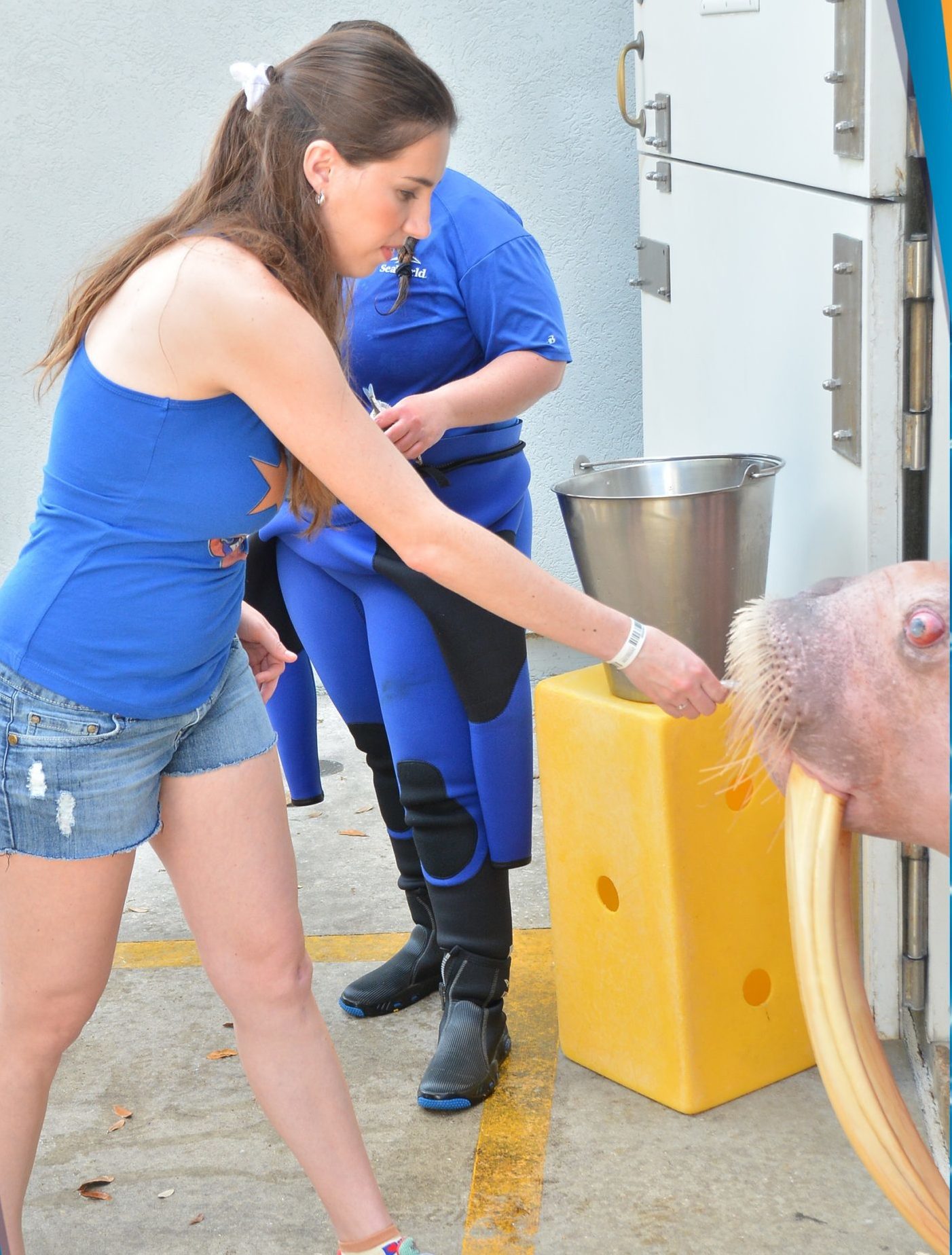
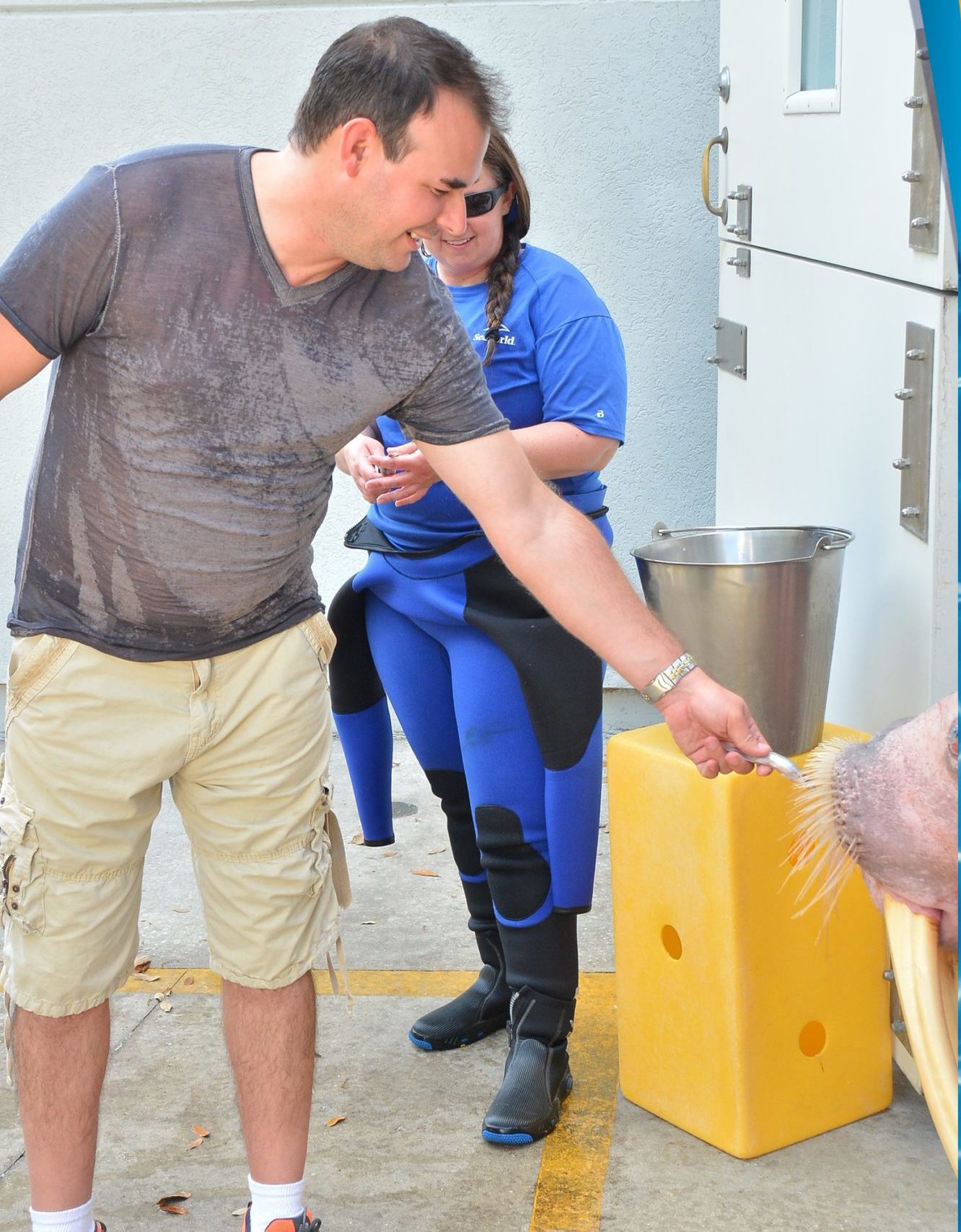
We each got the chance to feed him a fish and pose for a photo with him. After the whole group was done, Diana answered some questions about walruses in general (their tusks never stop growing, the one at Sea Lion and Otter Stadium has his tusks removed and is named Slowpoke, they have sixteen teeth). Then she told Garfield “Water!” and off he went, we actually heard the splash as he jumped in the pool.
The trainers then turned us back over to Ronnie, who announced it was the moment we had all been waiting for, it was time to visit the baby walruses!
On June 3rd, 2017, Garfield and Kaboodle, SeaWorld’s fourteen-year-old female walrus, had their first calf, Ginger. Ginger was actually the first walrus ever born at SeaWorld. A few months later, a young male walrus was rescued off the coast of Alaska named Aku. Since he was so young, Aku was deemed non-releasable by the U.S. Fish and Wildlife Service and the decision was made to send him to SeaWorld because we already had a baby walrus and the two were the right age to be playmates.
Ronnie explained that a lot of time and effort had been spent baby-proofing the walrus exhibit, only to find out when they put Ginger and Aku in the exhibit that they did not baby proof it enough. The babies found all sorts of things to get into, so they were moved back off exhibit until SeaWorld can finish making sure the exhibit is safe for them. This explains why my mom and I couldn’t find them a few weeks prior!
We headed inside, past an amazing mural of Arctic animals painted on the outside of the building. We entered a rather dark room with more paintings on the wall, and more importantly, a window to the babies!
Aku and Ginger were laying side by side, practically on top of each other. They’re both about the height of a large dog, and probably three times the weight. Aku was a little darker in color and a little bit bigger. I’m not sure if they were both asleep or just laying down because Aku kept randomly waving his flippers in the air, but that could have been him dreaming. Apparently, they are the very best of friends, and despite having this massive room to run around in, they choose to be as close to each other as possible at all times.
We were in there for about ten minutes as Ronnie told us a little more about the babies. Kaboodle was doing a great job as a first-time mother, but at some point, SeaWorld had to make the difficult decision to separate Ginger. In an ideal situation, Ginger should have been gaining weight as she got older and Kaboodle should have been staying at a constant weight. Instead, Kaboodle was losing weight and Ginger was maintaining so SeaWorld had to take over bottle feeding Ginger. I think this was actually meant to work out this way because it meant it was easier when SeaWorld needed to introduce Aku and Ginger when the time came. (Although no one could have known that back then.) Ginger and Aku were wary of each other at first, but after their first feeding they were running around the exhibit and playing within the first few hours. Now they’re inseparable.
And gosh darn adorable.
The plan is for SeaWorld to eventually reintroduce Ginger and Kaboodle, and to introduce Aku and Garfield as well so all four walruses can be one big happy family.
Ronnie took us back to the lockers to retrieve our items and led us back into the Wild Arctic exhibit area. He said we could stay in there to look at the animals, or he could take us back into the park where the tour started. Jay and I elected to do that in order to talk to Ronnie a little more. Jay asked him a little more about the specifics of reintroducing animals from different areas of the park. I asked how long he’d been at SeaWorld and I was surprised he’d only been there for five months. His background was working with a sea turtle rescue on Jekyll Island, doing the same kind of educational tours. We thanked him for doing such an awesome job and headed off to get dinner before going to pick up our pictures.
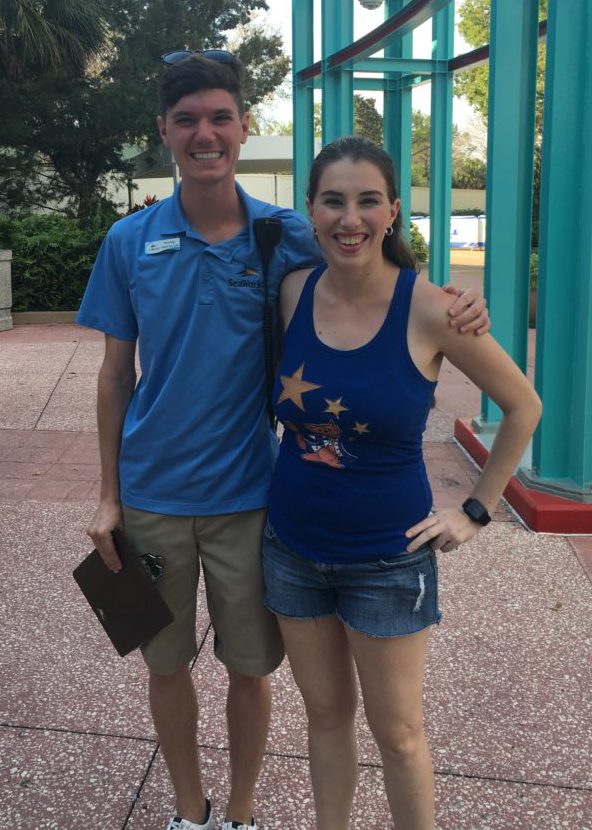
The Beluga and Walrus Up-Close Tour is an awesome look backstage at some of SeaWorld’s more unique animals. Until they finish the second round of baby-proofing, it is the only way to see Ginger and Aku in person. They do have a live feed set up to see them inside Wild Arctic, but it’s not the same. Ronnie was an awesome tour guide. He was knowledgeable, friendly, and passionate about the animals he was talking about. This tour was just another wonderful example of why I Stand with SeaWorld.
My only complaint is not being able to take my own camera in. I understand they want you to buy their pictures, and that it’s a safety thing where they don’t need people dropping stuff in the water, but there was literally no reason I couldn’t have my camera with the baby walruses. There was glass in between us. It also would have been nice to have pictures of the seals, or the other beluga whale. I wound up buying the one-day photo key for $60 to get all of the photos digitally because it made more sense than buying a couple of prints for $25. I wish I’d known earlier in the day that that is what we’d end up doing, we must have skipped four or five photo opportunities earlier in the day that I would have taken. I really didn’t want to spend that much money, but as I told my mom, “No way am I meeting a walrus and not getting photographic evidence!”
In the future I plan on trying to book multiple tours in the same day to maximize another one-day photo key.
Cost: The Beluga and Walrus Up-Close Tour is $40 per person plus tax. Annual passholders get a $4 discount. We bought ours on Blue Friday (Black Friday) when it was Buy One, Get One Free.
Duration: The tour itself lasts about an hour to an hour and fifteen minutes depending on how cooperative the animals are.
Value: Totally worth it.
Add Ons: They sell an “Animal Experience Add-On Package” which includes one printed photo and a plush animal. They also sell other types of photo packages, including the one-day photo key for $60 we purchased.

